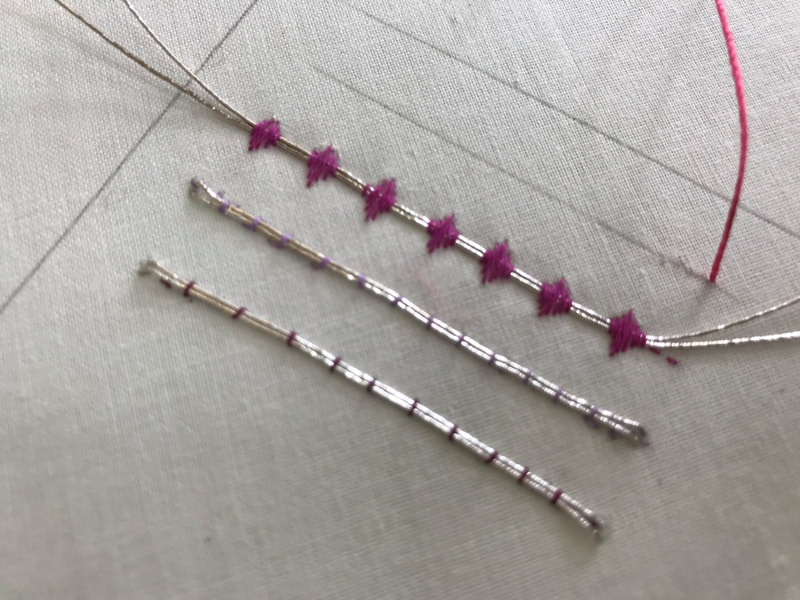|
Hanny Newton is a new tutor to Ardington. We are lucky to have her teach here as she is already very busy working on her second project for The British Museum. More on that, later. We met Hanny in the Newcomers Tent in Art in Action in 2015, Waterperry Gardens, when she had voted for Simon Sonsino’s (Director, Ardington School of Crafts) ‘Iceberg’ piece in the Artist’s Choice vote. Interestingly, Simon and Hanny also attended the same school in Shrewsbury, although not at the same time. Goldwork traditional and contemporary Hanny loves the rich traditions of goldwork and embroidery, but is quite clear on the way in which she wants to be a part of this heritage. Hanny questions what it is now and how it is used. She asks what are the rules placed around this skill and what are the rules that she wants to abide by. Hanny says ‘there is a place for traditional methods and there is a definitely a place for those techniques, but as a teacher I want to question what I am teaching. My favourite question for people is what happens if….? For example, the couching technique. Instead of learning lots of do’s and don'ts, I like to take all of that away and just teach the absolute basics. The whole point of the class is that people leave feeling they have a sense of ownership and they have an understanding of what interests them. Then they become designers in their own right. You can enter the room having never stitched and leave the room with your own inventory of stitch inventions’. Learning How to Learn By using this approach, Hanny wants to take away the instructions and let people learn how to learn. We have to reflect at this point on the fact that someone, somewhere, first had to devise the needle and thread to create the traditions we have today. By a process of experimentation, goldwork and embroidery have flourished and evolved over thousands of years. Earliest examples of embroidery in China date back to 5th to 3rd Century BC. Hanny and her students are now making more history, not just repeating it, by learning their own new ways and experimenting in this field. This culture of learning how to learn is a gift that will see us well placed to embrace the challenges we are facing today, as we read headlines such as ‘65% of current primary school children will move into jobs that don’t exist today’. Hanny’s Inspirations
One of Hanny’s inspirations is Alice Kettle, who as Professor of Textile at Art at Manchester School of Art, owns her practice. She does stitch, but creates her work in massive machine embroidered pieces that become paintings. Her work is full of bold and great compositions. Another inspiration is Susan Collis, famous for recreating objects to look like everyday pieces that may have been intended for something else such as a paint splattered apron that uses embroidery, inlay, precious metals and stones to create the paint splatters intentionally. Interesting how this makes you feel when you see the work up close. The British Museum Project Hanny is already working on her second project with The British Museum which hopes to run over half term in February 2019. Look out for more details on their website. It will be based on the 669–c. 631 BC Asyrrian king called Ashurbanapal. His palace was surrounded by amazing lion hunt reliefs carved from stone. It is anticipated that there will be drop in workshops of up to 50 people. ‘Terrifying’ says Hanny, but once you have seen her work and heard her philosophy, we think she will do a first rate job.
0 Comments
Your comment will be posted after it is approved.
Leave a Reply. |
Blog categories
All
Author:
|








 RSS Feed
RSS Feed